Disclaimer: The following is a recollection of events that occurred in the early summer of 1988. An avoidable accident resulting in the death of a paying passenger was due to an unfortunate series of errors by ill-prepared staff and owners of a poorly run commercial river company from Colorado. The story is accurate and true; only the company name and “key” personnel who were culpable have been changed to protect the innocent in this unfortunate death of an individual.
The year was 1988, and I was officially a single man again. I was living in Denver, but came to Bluff to run a private single-boat trip down the San Juan River in April with my good friend Steve Corcoran and a friend of his. We launched from Sand Island boat ramp and took out at the new Paiute Marina on Lake Powell. I had made arrangements with Wild Rivers Expeditions (WRX) in Bluff to pick us up and take us back to Bluff. I had a new 16 ft Rogue inflatable all tricked out with aluminum frame, diamond plated side rails with adjustable cross rails to accommodate drop boxes and ice chests, with a center floor and 10 ft Sawyer oars. I had left my boat at the WRX boat shop over the winter as Charlie DeLorme had asked me in the fall of 1987 to do some trips the following year. He needed another experienced boatman, plus he wanted my geological credentials to compliment several Archaeological trips he had booked for the upcoming river season.
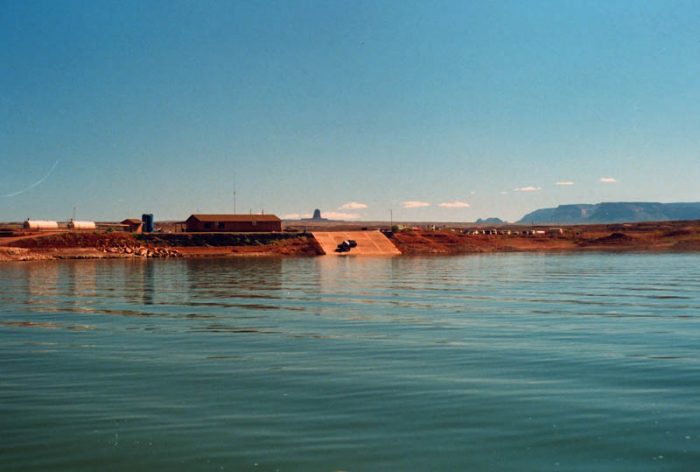
I went back to Denver with my friends and returned to Bluff in late May to lead a group of geologists down the San Juan to look at the incredible detailed stratigraphy exposed in the limestone canyon walls. I was aware of the news of a recent death at the Mule Ear, but at the time it didn’t appear to involve anyone from WRX and I went about my business following the river trip by doing a brief petroleum consulting job for a fellow and his wife from Toronto, Kansas basing out of the Pioneer House in Bluff.
Then, in June, Charlie told me the whole story about the accidental death at the Mule Ear in May, because he was now being sucked into a possible Liability lawsuit by the family of the dead kid against the Peacock River Company. However, we had to laugh a bit, as the attorney representing the family had made reference to WRX from “Cliff, Arizona” – not Bluff, Utah. Anyhow, Charlie gave me a copy of his notes about the disaster (see letter below). I was now working alongside the WRX guides named in the letter, plus Tom Rice who later told me that “In fact, I was motor training Tamara on that day and dropped her off at the Mules Ear camp. I don’t recall if we were flagged down or if that Sheriff (Rudy Cook) had asked us to motor down there and give them assistance.”
Charlie’s Letter:

MEMORANDUM
TO:
FROM: Charles M. DeLorme, President, WiId Rivers Expeditions, Inc.
SUBJECT: Fatality on San Juan River, Peacock River Outfitter’s trip, on May 13, 1988
(and subsequent retrieval of victim, John “JR” Roylance)
DATE: May 20, 1988
The following details and chronology of events are listed from notes taken by me during conversations with Tom Klacker of Peacock at my office on May 13th, notes made by me at the riverside camp at River Mile 9.2 or thereabouts, and the evening of May 14th after the retrieval when I made additional notations bock at my office In Bluff, Utah.
At approximately 9:30 P.M., M.D.T., May 13th 1988, Mr. Tom Klacker of Peacock River Outfitters knocked at my home door. Upon entering, he asked for a drink, which we gave him, told my wife Susan and me that there had been on accident on his trip and one of his passengers was “unconscious” as the result of a fall. I Immediately suggested he contact St. Mary’s Hospital Life Flight for evacuation, the San Juan County Sheriff’s Department and the Bureau of Land Management. He said he had just come from Deputy Sheriff Rudy Cook’s home and had called St. Mary’s but should call the Bureau of Land Management. I offered Mr. Klacker the use of my office and phone and assisted him in obtaining phone numbers.
Between his arrival and departure around 11:30 P.M. he phoned Ms. Sheri Griffith of Griffith River Expeditions, Mr. Jerry Mallet of the Western River Guides Association, Mr. Rick Merrick of Aransas River Tours, Mr. Reed Dills of Four Corners Expeditions and Linda Richmond of the BLM. He also phoned St. Mary’s to cancel the helicopter evacuation as at approximately 10:30 P.M. Officer Cook phoned to say that a Mr. Ted DeAngelo had sent word that the victim was dead. Officer Cook asked to speak with me with regards to suggestions for retrieval of the body. He asked me if we would be willing to assist with picking the body up by boat the following day. Mr. Klacker asked what time we could get to his camp and I Informed him It would be between 9:30 and 10:00 A.M. He said he would appreciate any help we could offer in planning, so I formulated the following management plan to assist him. We obtained a body bag from Officer Cook. A local Navajo couple that lives in the vicinity had stopped by around 11:00 P.M. at someone’s request (I know not who) so I loaned Mr. Klacker a small one person inflatable and flashlight to get back to his group by first light at the latest and the Navajo couple (Ed and Ester Haycock) gave him a ride down Comb Wash so he could float the two miles of flatwater to his camp at River Mile 9.2. Having asked him what his crew size was he told me he had five guides including himself, and two faculty from the college for whom the trip was being run. I advised him to take the body bag back to camp with him. At first light he should assign one of the school faculty to remain with the group at camp while he, the other faculty member and the four guides from Aransas River Tours go to the body, place it in the bag, strap it securely to a backboard and transport it to the river’s edge. I explained this in detail, including the need for six individuals due to the weight, as well as the importance of strapping the body securely, taking care to avoid additional injuries to helpers in the retrieval and the length of time Involved in returning to the river (approximately four hours to cover the two miles of rugged terrain).
Mr. Klacker then departed for the river with the Haycocks with body bag, Inflatable boat, paddle and flashlight. I began to prepare a boat for launch with all standard equipment and turned into bed about 1:00 A.M., May 14th, 1988.
I arose at 5:00 A.M. and finished preparation of my equipment enlisting the aid of four Wild Rivers guides who were preparing to conduct an eight hour “day trip” in two boats from Sand Island to Mexican Hat.
Linda Richmond and an assistant arrived about 7:20 A.M. to help with loading equipment or vehicle shuttles or in whatever manner they could. I remember remarking to one of my guides at about 7:00 A.M. that Mr. Klacker and his crew should have breakfast laid out for his group and be at the body by now. Little did I know how wrong I was at the time.
Officer Cook arrived at around 8:15 A.M., we left for the launch site at Sand Island where with the assistance of the BLM, several Wild Rivers employees and my wife, Officer Cook and I were on the water motoring downstream at 8:30 A.M.
No difficulties were encountered in motoring down and at River Mile 8.3 on river right I encountered a professional guide in a camp from Worldwide Explorations who asked that we have Mr. Klacker please leave the Major First Aid Kit that Worldwide had loaned to him the night before on the beach at River Mile 9.2. He said they had loaned the First Aid Kit at the time they first became aware of the incident (when it was believed the victim was unconscious) due to the fact there was no Major First Aid Kit on the Peacock trip.
Upon arrival at the camp at 9:45 A.M., Officer Cook and I found Tom Klacker, the four guides from Aransas River Tours, the two faculty from the college and the students at river’s edge. When I saw everyone on the beach, I assumed that the body had been retrieved, however, when I asked where the body was Mr. Klacker told us it was still in the same location. I asked if he had bagged the body and placed it on the backboard and he stated he had not.
At this point Officer Cook and I asked for the guides to assemble with us away from the group for a private consultation. I asked the guides who was in charge. I received three different answers. One guide said that “Bob Camel of Aransas River Tours was in charge”. Another said, “No, Ted DeAngelo from the college is in charge.” Then Mr. Klacker said “Well, do you mean on river or on the hikes?” I then told the group that since nothing had been done and based on Officer Cook’s and my experience in Search and Rescue and their failure to implement a most simple plan, that we wished to take charge of the situation immediately. No protest was made. Officer Cook and I agreed that actually no one was in control.
I instructed Mr. Klacker to remove the gear load from his two inflatables (an Avon Pro MKI II and what appeared to be a Moravia) so as to facilitate the evacuation of the remaining guests. I suggested he use Utah licensed guides or at least guides “as close to being properly licensed as you have among you.” I then requested that the three remaining guides from Aransas River Tours lead Officer Cook to the victim’s body, prepare it for transport and begin the journey back. I informed them that within the next hour two Wild Rivers Expeditions boats would be coming by on a “day trip”, and that on board each vessel were two fully licensed guides (as one guide on each boat was training another in the use of motors) and I would take a guide off of each vessel to assist with the body retrieval.
One of the “leaders” at this point suggested we get a helicopter to remove the body. I pointed out the fact that it would be evening before we could even contact a chopper and it would be the following day before it could arrive. Since we had the available resources for retrieval, I suppressed any further attempts at this (and the subsequent complaints that followed during the next 36 hours).
Mr. Klacker and another guide then launched with the sixteen remaining guests and headed towards Mexican Hat.
Officer Cook having completed what reports he could at that moment then directed the three Aransas River Tour guides to take him to the body. Being intimately familiar with the geography of the area I knew the location where the body was and told them I would meet them there as soon as I could flag down my boats and get the extra guides to assist.
I also loaned the initial retrieval party 165 feet of 11 mm perIon rope as they said this was one reason why they hadn’t gone back to the body … not having enough rope to safely lower the body down a talus slope. However, I noted when I was told this that there were three throw Iines of about 75 feet each laying on the ground close at hand and well-suited to the task.
I was able to flag down my boats, familiarize my guides, Tamara Wiggins and Rebecca Gardener with the situation and meet the retrieval party at the accident scene. We rendered assistance with the lowering of the body down the talus slope the final 100′-150′ to the valley floor and embarked on the journey back to the river, traveling some 30 feet to 200 feet at a time as frequent stops were needed to traverse the terrain, as well as rest.
There were complaints from the Aransas River Tour Guides upon occasion and I was fearful they were actually going to “mutiny” or give up. One guide said “Who’s idea was this?” while glaring at me in an angry manner. I told him it had not been my idea to bring a group of kids on a hike on the rim of Comb Ridge, letting them find their own way down the sheer west face but it was damn sure my idea to get the boy’s body out of this backcountry and that was exactly what we were going to do.
After several grueling hours of work (and a back injury to myself) we reached the river and embarked with the body on board, leaving the three Aransas River Tours guides to watch the equipment, consisting of some six canoes, six kayaks, one inflatable kayak and miscellaneous camping gear. Through Mr. Klacker’s failure to retrieve the body, or even to prepare it for retrieval, the delay cost us many valuable daylight work hours. However, we reached Mexican Hat in safety even though our last hour on the water was in darkness. BLM ranger Linda Richmond was still faithfully waiting for us at Mexican Hat for which I was and am very grateful.
We loaded the boat, gear and body up and returned to my Bluff office where Mr. Klacker was waiting to ask us “how it went?” I lost my temper with him, telling him how disgusted I was with his complete failure to implement the plan we had established for him.
I also feel compelled to note several other areas that concerned me about the entire affair. At the camp I noted that the group was not using a fire pan and charcoal was spilling out from all around their fire pit. When Mr. Klacker embarked from River Mile 9.2 one of his passengers was short a lifejacket (even after the fatality) and no spares were found so the passenger was instructed to wear a “guides” jacket.
One guide informed me that the only guide licensed by the State of Utah on the trip other than Mr. Klacker, had an expired license. I do not know if this is true or not but it certainly seems even if there were two properly licensed guides that with 17 guests the trip was short licensed guides. The guides who helped with body retrieval said they had never been on the San Juan before, nor had they hiked in the area where the accident happened. They were surprised to learn of rock art and ruins sites along the river that are common knowledge to guides here. At one point it was stated to me that someone had described the hike and route to his group but didn’t actually lead nor appoint a lead or sweep to the group. After learning of the boy’s death however, the story changed and this was denied.
Very curious to me is the fact that Mr. Klacker came to my office prior to launching the trip and inquired about the possibility of hiring a Wild Rivers guide as he was short licensed guides and wasn’t sure the ranger would let them on. He also asked about current conditions in the vicinity of Chinle Wash with the Navajo family there. I Informed him that we stayed out of the area at present and he should probably do the same. This is the very region where the accident occurred and indeed, they did encounter some difficulty with the family. Mr. Klacker never came back in to hire a guide nor apparently did he place much credence on my advice to steer clear of the Chinle Wash region. I had told him one of our guides would be pleased to help him.
I was also surprised at the fact that Mr. Klacker did not know the exact location of the body, that the body was left unattended until our arrival, and that the guides were unaware of how long it would take them to go from the camp at River Mile 9.2 to Mexican Hat. As anyone might be in a situation like this, all involved seemed to be covering their own tail end.
As an outfitter, I am very sensitive to the difficult job we undertake in a commercial guiding environment. Wild Rivers is very supportive of outfitters in general as am I. We endeavor to do our jobs well and assist other outfitters when they need help and are in general proud of our Industry.
I wish however, to personally disassociate myself from any outfitter who runs In “grey” areas of ethics and trip quality as, not only do they hurt our Industry, but actually fail to serve the public in a competent manner. That’s something we’re all supposed to be doing. I think, instead of covering our butts we’d better be learning from this tragic experience rather than pointing blame to someone else, complaining about having to carry a body Instead of calling a chopper, and worrying about our liability insurance rates. We should be leading our expeditions, not groping our way downstream. We should be preventing disaster as best we can and yet, if we are unable to prevent it, we should at least be prepared to manage it in a competent manner.
Charles M. DeLorme
President
Wild Rivers Expeditions, Inc.
THE MULE EAR
The actual “Mule Ear” is a name given to a distinct promontory landmark that is part of the Comb Ridge monocline that dominates the eastern flank of the Monument upwarp in southeastern Utah (Figure 1). Rocks that comprise Comb Ridge consist of a reddish tan-colored sandstone complex collectively known as the Glen Canyon Group (the Navajo-Kayenta-Wingate sandstones of Jurassic age). The Mule Ear is prominent from river level about one-half mile past the mouth of Comb Wash which enters from the north side (RR) (Figure 2).
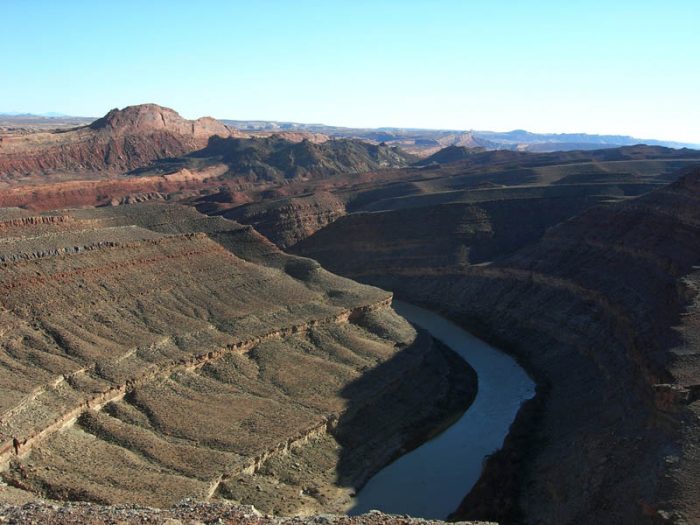
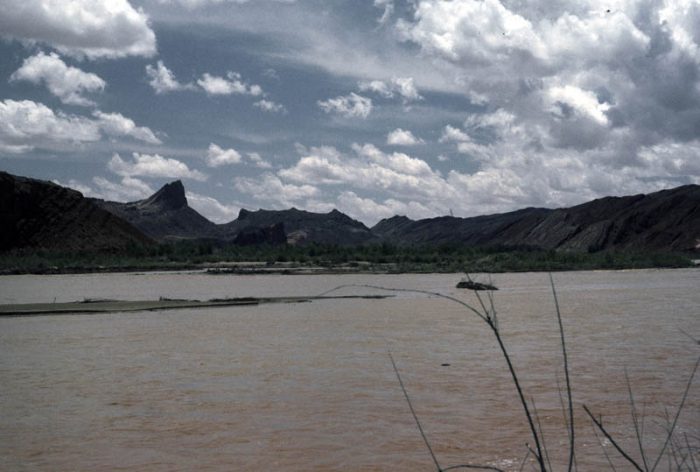
One of the most striking aspect is the huge flat vertical face of the Mule Ear escarpment immediately adjacent to the east side where it reaches an elevation of 5111 ft, (Figure 3). The total elevation difference of the Mule Ear, from highest tip to the wash below is over 710 ft, of which the upper 400 ft is a shear vertical wall before the angle slopes steeply to base level and is strewn with large boulders and talus. The dead hiker in 1988 fell from the left-side “notch” as viewed in Figure 3. Figure 4 shows the incredibly tough terrain to cross from talus slope of Mule Ear to river camp, particularly when packing a dead body on a gurney.
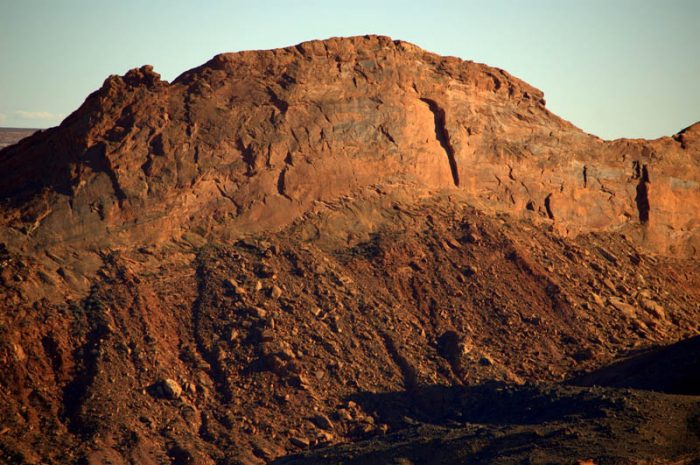

By 1988, I had guided trips with Kenny Ross, Don Baars, Ted Hatch, Dee Holliday and now Charlie DeLorme. In addition to basic first aid training (First Responder courses were still not required for Utah or Arizona guides), all river guides learned how to conduct not only river safety, but also how to safely conduct hiking excursions away from the boats. I don’t have any statistics, but I’m almost positive that far more accidents requiring first aid or medical attention occur on shore, away from the boats. We at WRX always made it a point when escorting groups of passengers on hikes to scatter ourselves among the group with typically a boatman in the lead, at least one mixed with the pack, and always a sweep. We made a head-count of those going on a hike as well as those who chose to stay behind. We NEVER let paying passengers wander off on their own; they had to stay with the group. This was particularly the case when hiking on Navajoland like Chinle Wash in 1988.
To let two college-age young men attempt to descend the sheer wall face of the Mule Ear – without proper climbing gear, or abilities, almost guaranteed the disastrous results. River guides should know where they are taking passengers and should never let individuals venture forth unescorted. There’s a lot more to river guiding than just handling a boat skillfully. I’m now retired from commercial guiding and can only hope that present-day guides have gone through some “apprentice-like” training and know as much about the surrounding terrain as they do about the stretch of rivers that they are taking paying passengers down. My experience suggests that they know neither. This incident in 1988 should be required reading for all river guides; novices and experienced ones too. River guiding is fun and rewarding, but one must learn to be on their toes at all times, and know when to say “NO!”
But here’s the real kicker. A clueless river operation from Colorado, with unqualified river guides and none of whom had ever boated the San Juan River and certainly didn’t know the country, ran an apparently “pirated” river trip for a midwestern college group, where the college leader was equally clueless about boating and hiking in primitive areas. Then, when disaster stuck, they had no plan; no plan at all and relied on the volunteer rescuers from Bluff, only to then try and implicate WRX staff when the family of the deceased threatened legal action. I know not if the family was successful in being compensated for the Colorado outfitter’s irresponsibility. I hope they won a hefty lawsuit and bankrupted the river company and owner.
And it sure as heck makes me wary to lend a hand as a good Samaritan in this day and age! This lame-brained situation occurred in 1988. With the litigious and divided society in which we now live, I’m pretty sure, if left to my judgement under similar circumstances, I would tell the panicked “leaders” that they are on their own.
GENE M. STEVENSON has over four decades experience as a “river runner” including Grand Canyon, Cataract Canyon and the San Juan River. He worked twenty-five years for Wild Rivers Expeditions as a professional river guide, principally on the San Juan River where he refined his boatman’s storytelling skills. He has authored or co-authored over forty-five peer-reviewed geological papers and abstracts and conducted numerous geological field trips and seminars. He earned his Bachelor of Science in Geology from Fort Lewis College and his Master of Science in Geology from Northern Arizona University. He resides in Bluff, Utah.
To comment, scroll to the bottom of the page.
Zephyr policy: REAL NAMES ONLY on Comments!
Don’t forget the Zephyr ads! All links are hot!
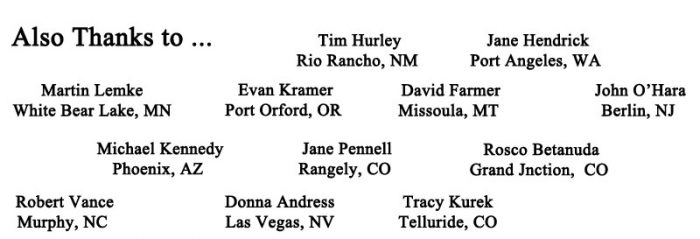


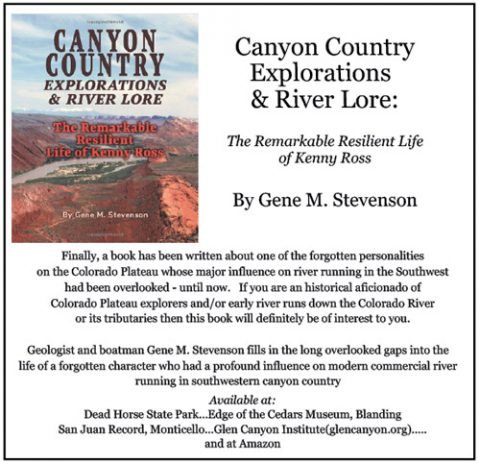
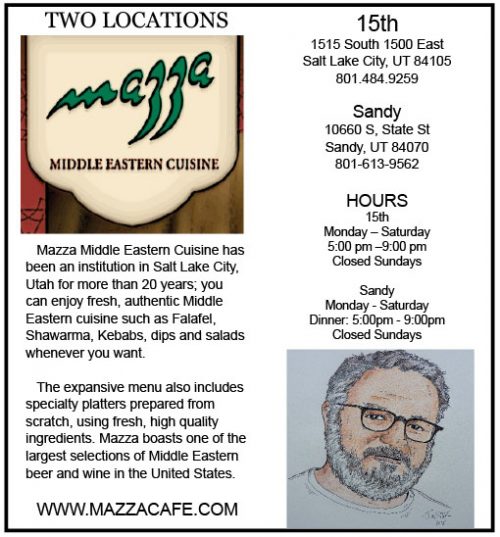
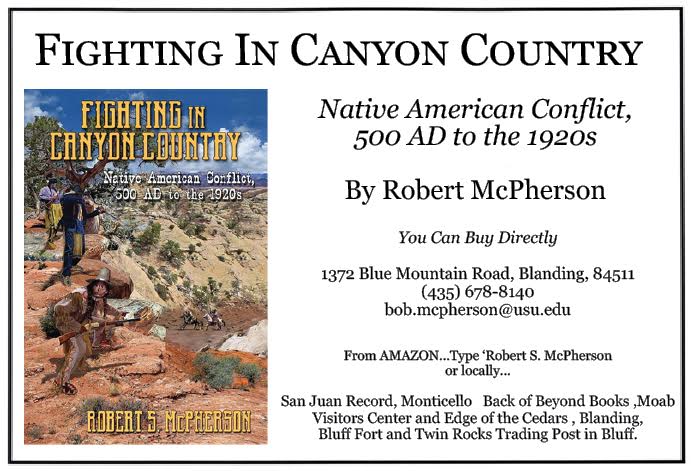
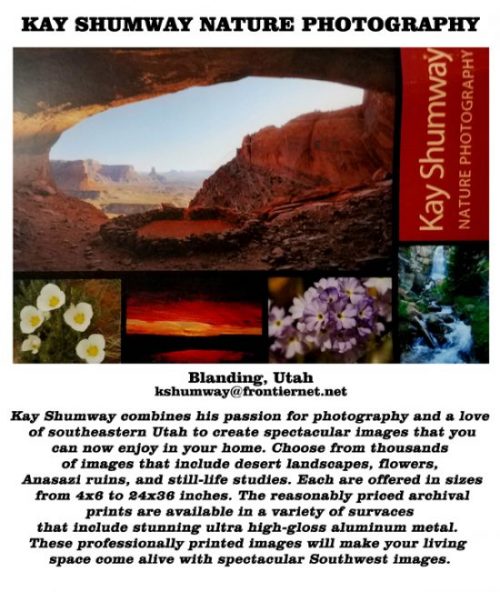


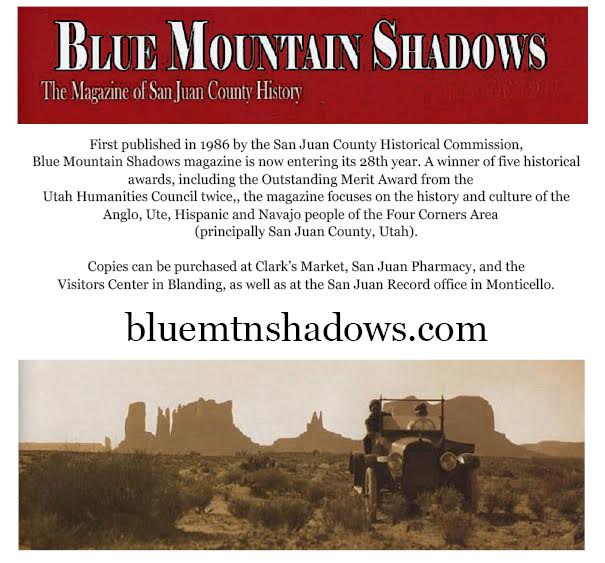
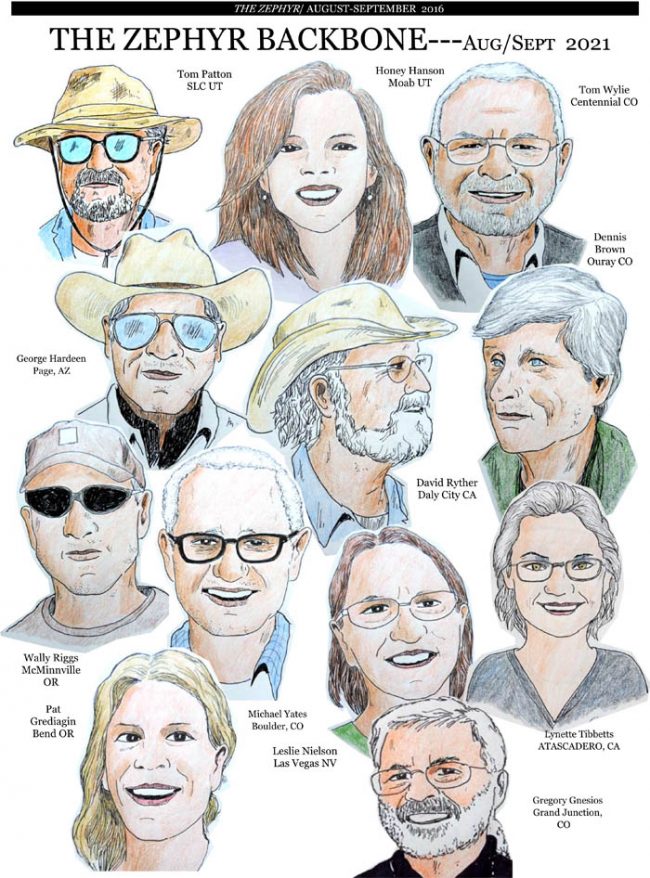
On a couple of occasions I accompanied paying customers on Mule Ear treks. It was part of my job as a river guide working for Wild River Expeditions in 1983. Even though I was fit & had many years experience navigating challenging back country terrain such as the Mule Ear, I learned first-hand what difficulties can arise for anyone, experienced or not. Simply hiking up & down grueling terrain under the blazing sun presented enormous problems for many of our passengers, all of whom worked at typical office jobs in sizable Eastern cities.
Excerpt from my detailed field notes: “THE HIKE FROM HELL! Departed field camp around 9:30 awaiting another group to join us on the San Juan. Back at 6:00. It was a 9-mile roundtrip up the Diatreme then over an obstacle course that one young fellow said made anything he’d encountered in Viet Nam seem like child’s play. Hiking a non-trail up & down arroyo walls of Chinle Wash. We were several hours into our hike when 5 in the group wanted to return to the field camp. So they were escorted back. I helped one guy out of a narrow tributary stuck up to his crotch in something like quicksand. For my effort he rewarded me with a bottle of Martel Cognac.” We were so very lucky nothing worse happened on those treks.
When Gene told me he was writing about this tragedy to inform & alert others to the dangers, I enthusiastically applauded. Had we not been prepared for such events, someone might very well have experienced a similar fate.
Thanks Gene.
scary stuff — yes, the terrain and location, but more scarily so, the ineptitude of the so-called “professionals” ~